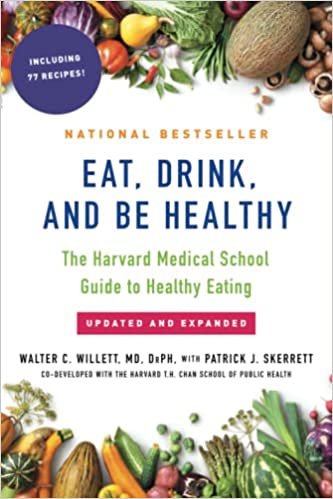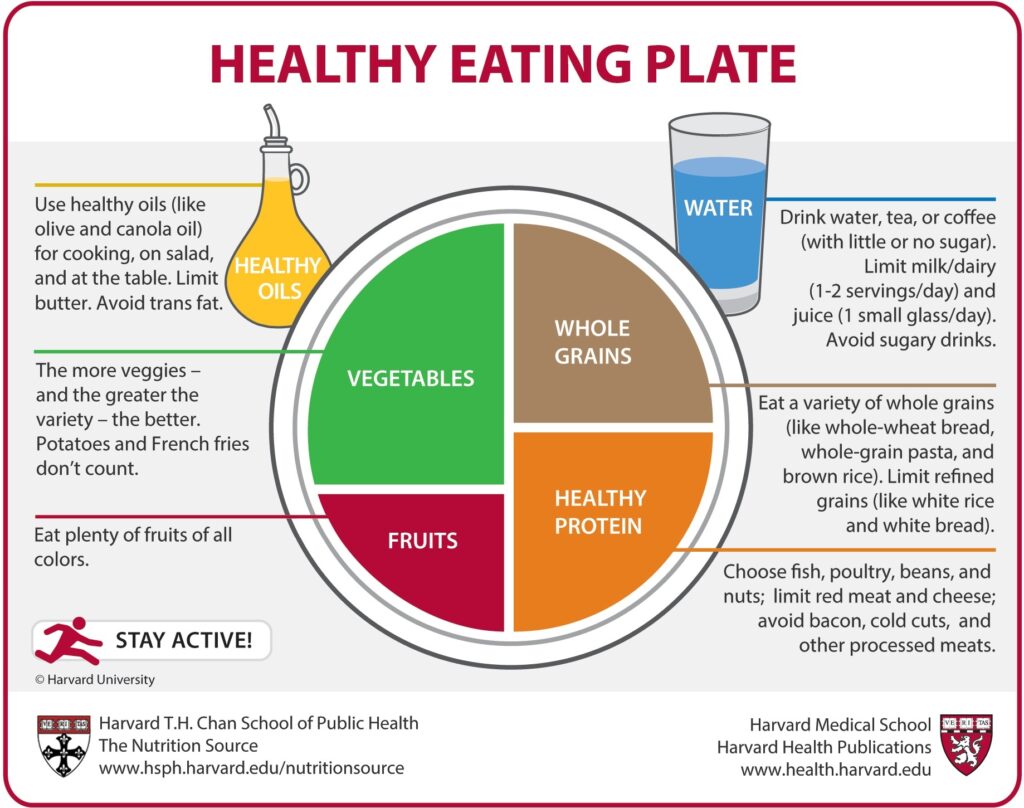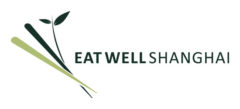Finally time for another blog! I haven’t written anything in around 5 months. I wrote my last blog shortly before the birth of my first child. Having a baby has brought on many new challenges in my life. For example, breastfeeding has been much more challenging and time consuming than I had anticipated. This new chapter, of being a working mom, has redefined what I thought busy meant. While this blog isn’t about babies, I must say that I have a whole new appreciation for moms!

This blog is about a nutrition book called “Eat, Drink, and be Healthy: The Harvard Medical School Guide to Healthy Eating.” I rarely recommend nutrition books because I feel the author often has an ulterior motive. The research and facts can be distorted to gear the reader towards what the author wants them to believe (or to purchase!). For example, poorly done research can be presented as promising evidence to promote a new fad. However, I find this book to be a very refreshing take on healthy diet. It isn’t trying to sell you on any type of diet trend. The advice is practical and based on current research. It dives into detailed information on a range of topics including macro / micro nutrients, glycemic load / glycemic index, grass fed vs. grain fed beef and bottled vs. tap water. I will hopefully write about some of these in future blog posts. It also does a great job in explaining why we hear so much conflicting research in the field of nutrition. I would recommend it for those interested in detailed nutrition information. I would also recommend visiting the Harvard School of Public Health’s website.

Becoming more informed about nutrition information can help with avoiding fad diets and other dietary pitfalls. The most important thing to remember is that a diet must work for you. There are genetic, environmental, and psychological or social factors that affect us all differently. Choose a diet that has plenty of food choices (diets should not have huge restrictions), is sustainable, healthy for your body, and doesn’t include many expensive foods and supplements. One resounding theme for a healthy diet is to balance healthy proteins with fruits, vegetables (in abundance!), whole grains and healthy fats while reducing sugar and processed foods. I’ve posted a few photos of what I enjoy eating for lunch here in Shanghai (lotus root, amaranth, soy beans etc.), Hopefully, they can show it’s possible to eat well in Shanghai or elsewhere!
Until the next time! – Jess W.
